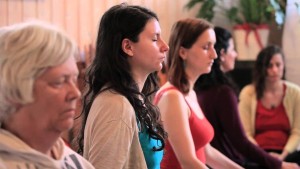“Spiritualizing sex is actually a movement of energy—feeling and emotion—that rises within you and moves into your sexual physicality as an alive, tender, erotic, or passionate expression. Your bodies move without inhibition so all the energy can flow out of you and between the two of you. You allow spiritual energy to express its dance through you. Sexuality can be a profound demonstration of your love, and especially your freedom, to express and bond. Spiritual sex, then, combines how you express your love with the intentions or blessings you bring to your partnership.” ― Alexandra Katehakis
Sex is a powerful motivation that is responsible for both very positive and very negative behavior. Its negative potential has resulted in a myriad of laws and regulations not to mention social mores, to control it. This is very evident in traditional religions and their teachings. The control of sexual behavior plays a prominent role in most religions. This ranges from celibacy to polygamy to prohibitions against sex outside of marriage, to its use for procreation only.
Many of these prohibitions result in frustration and repression. In many this can produce negative consequences. But, sometimes sexual motivation can find expression in sublimation, a creative and positive substitution of a socially acceptable outlet for the prohibited behavior. Unfortunately, in others sexual frustrations can result in release of abhorrent behaviors such as forced sex. Hence it is clearly important to understand how religion and spirituality affect sexual behavior.
In today’s Research News article “The Relationship among Sexual Attitudes, Sexual Fantasy, and Religiosity”
http://www.ncbi.nlm.nih.gov/pmc/articles/PMC4419361/
Ahrold and colleagues studied sexual attitudes and sexual fantasies in college students with diverse religious affiliations. They found not surprisingly that those who were not affiliated with a formal religion, agnostics, had the most sexually liberal attitudes of any group. They also found that higher levels of intrinsic religiosity were consistently associated with more conservative sexual attitudes. That is the participants who were more sincere and devout about their religion had the most conservative sexual attitudes. Interestingly they also found a large gender difference in the relationship of spirituality with sexual attitudes. High levels of spirituality were associated with less conservative sexual attitudes in men but more conservative sexual attitudes in women.
It is not surprising that the true believers (intrinsic religiosity) would be more conservative in sexual attitudes. This simply reflects the teachings of most religions. Hence those that are sincere and devout in their religion would be expected to follow those teachings regarding sex. Unlike religiosity, high levels of spirituality had gender specific associations, with men more liberal and women more conservative in their sexual attitudes. But when intrinsic religiosity was considered along with spirituality the results were more straightforward with spirituality associated with more liberal sexual attitudes across all participants.
It’s interesting that spirituality and intrinsic religiosity appeared to act in different directions. “Whereas religiosity refers to importance of an organized belief system” its effects line up with the teachings of the religion. On the other hand, “spirituality refers to the subjective, experiential relationship with or understanding of a divine being or force.” This does not produce clear teachings and dogma; thus allowing for more liberal interpretations as to what behaviors and attitudes are appropriate to be expressed (see Katehakis quote above).
Regardless, it is clear that religion and spirituality play a powerful role in shaping sexual attitudes.
“A man’s eroticism is a woman’s sexuality.” ~ Karl Kraus
CMCS – Center for Mindfulness and Contemplative Studies









